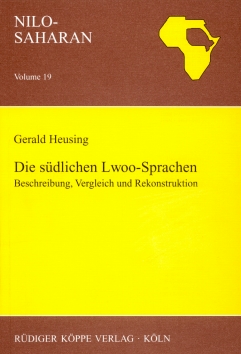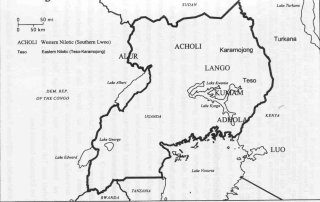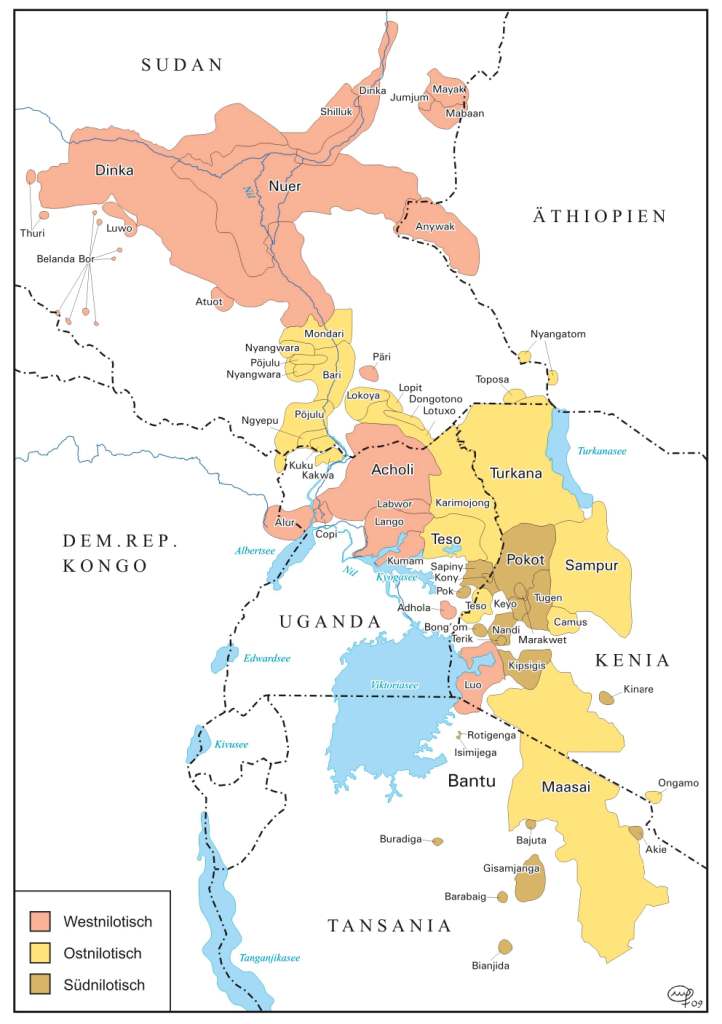




The present book focusses on the languages Acholi (Uganda), Adhola (Uganda), Alur (Uganda and Democratic Republic of Congo), Kumam (Uganda), Lango (Uganda) and Luo (Kenya and Tanzania). They comprise the group of Southern Lwoo languages and belong to the western branch of the Nilotic language family. The languages are synchronically and diachronically described.
Chapter 1 (Introduction) presents information concerning the state of research and the objectives of the book. In addition, it furnishes the reader with background information towards the individual languages, the sources of information and the writing conventions which are used. Chapter 2 (Phonology) starts with a discussion about the analysis of palatal and bilabial segments between consonants and vowels. It continues with the description of the inventory, distribution, phonetic realisation and quantity of vowels.
With regard to the consonants, first of all an answer is given to the question whether palatal plosives or postalveolar affricates are found in the languages. It follows the description of the inventory, distribution and phonetic realisation of the consonants. Problematic cases like implosives, labiovelars, dentals, nasal compounds and fricatives are dealt with separately. Also morphophonological aspects are treated in this chapter. They comprise the following topics: vowel harmony, consonant harmony and consonant polarity.
Suprasegmental characteristics like word accent, inventory and distribution of tonemes as well as tone sandhi are described, compared and reconstructed in chapter 3 (Tonology). Additionally, a relative chronology of the reconstructed tone rules is introduced. Selected aspects of word-building are presented in chapter 4 (Morphology) which covers dependent and independent subject and object pronouns, cardinal numbers and derived abstract lexemes.
Chapter 5 (Lexicon) is dedicated to the vocabulary. Here, 103 lexemes are compared and reconstructed. Chapter 6 (Internal Typology and Classification) presents an internal typology developed with the help of 20 phonological, tonological and morphological features as well as an internal classification of the Southern Lwoo languages. The book closes with a comprehensive bibliography.
Further analyses of Nilotic languages have been published in the same series:
Heusing has not only collected and made accessible new and first-hand data on the already better known Lwoo languages, but also includes material on little-studied Southern Lwoo varieties such as Adhola and Kumam. The rich documentation of Acoli, Adhola, Alur, Kumam, Lango, and Luo already makes Heusing’s study an important source for other Niloticists and linguists interested in the area. […]
Heusing’s analyses on the phonology and his insights into the morphology make this a stimulating and fascinating source for all those who are interested in language history of one of Africa’s true “melting pots”.
Anne Storch in Journal of African Languages and Linguistics, 28/2, 2007, 246-250
© 2026 by Rüdiger Köppe Verlag – www.koeppe.de